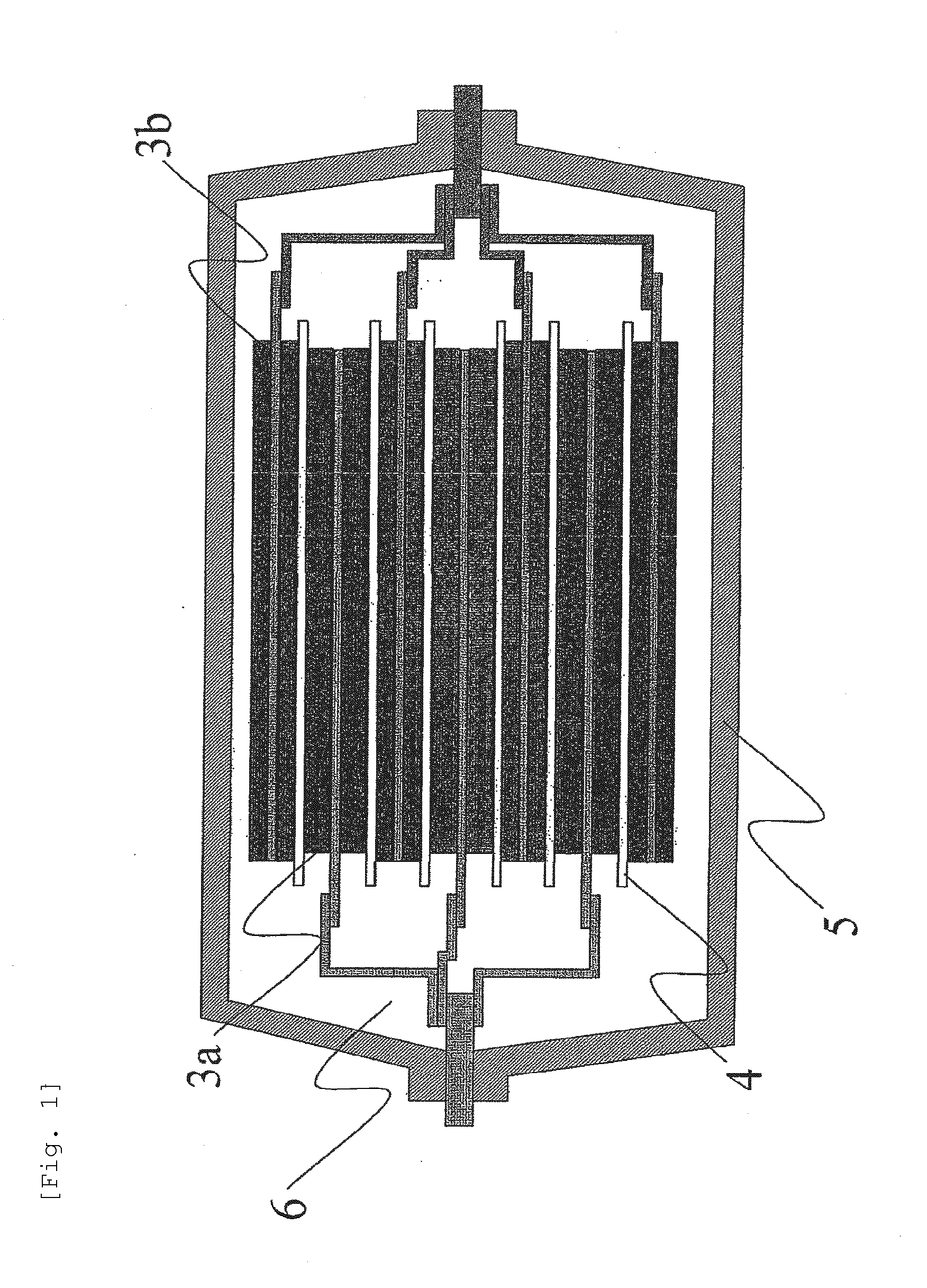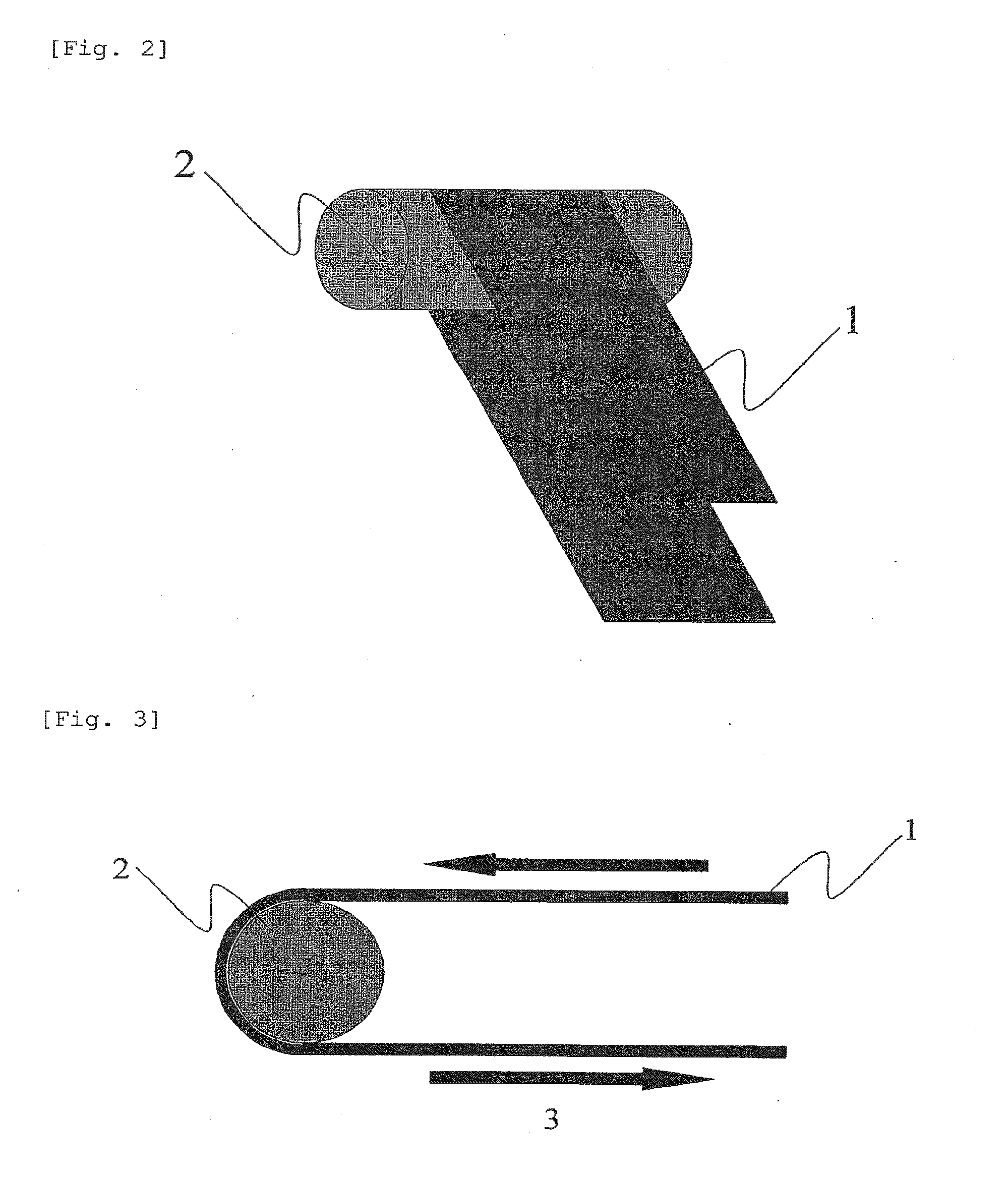Aqueous paste for electrochemical cell, electrode plate for electrochemical cell obtained by applying the aqueous paste, and battery comprising the electrode plate
a technology of electrochemical cells and electrode plates, applied in the field of electrochemical cell aqueous paste, electrode plates for electrochemical cells obtained by applying aqueous paste, and battery comprising the electrode plates, can solve the problems of lowering the battery life, affecting the cycle life of the battery, and requiring a large amount of addition, so as to improve the cycle life, improve the cycle properties, and improve the effect of cycle li
- Summary
- Abstract
- Description
- Claims
- Application Information
AI Technical Summary
Benefits of technology
Problems solved by technology
Method used
Image
Examples
example 1
[0175]An olefin copolymer (a) was prepared by mixing 100 parts by weight of a maleic-modified random polypropylene (a-2) having a weight average molecular weight of 100,000 (in terms of polystyrene) and a maleic-modification degree of 1.0 and containing a total of 25% by weight of butene as a copolymerization component with 30 parts by weight of a maleic-modified polypropylene (a-4) having a weight average molecular weight of 20,000 and a maleic-modification degree of 4. The resultant was further mixed with 10 parts of potassium oleate. The resultant mixture was melt kneaded with a biaxial extruder at 200° C., which is followed by kneading while adding a potassium hydroxide aqueous solution.
[0176]The product discharged was dispersed in water, to thereby give an emulsion (aqueous dispersion for an electrochemical cell (A)) comprising an olefin copolymer (a) having a volume average particle diameter of 200 nm and a nonvolatile content of 45%. The melting point of the (a) was 85° C.
example 2
[0177]Preparation was performed in the same manner as in Example 1, except that as an olefin copolymer (a), 100 parts by weight of the modified random polypropylene (a-2) was replaced with 20 parts by weight of a random polypropylene (a-1) having a weight average molecular weight of 100,000 and containing 30% by weight of ethylene and butene as a copolymerization component, and 80 parts by weight of a maleic-modified random polypropylene (a-2) having a maleic-modification degree of 1.0 and containing a total of 25% by weight of butene as a copolymerization component, to thereby give an emulsion comprising an olefin copolymer (a) having a volume average particle diameter of 200 nm and a nonvolatile content of 45%. The melting point of the (a) was 80° C.
example 3
[0178]Preparation was performed in the same manner as in Example 1, except that as an olefin copolymer (a), the modified random polypropylene (a-2) was replaced with a random polypropylene (a-1) having a weight average molecular weight of 100,000 and containing 30% by weight of ethylene and butene as a copolymerization component, to thereby give an emulsion comprising an olefin copolymer (a) having a volume average particle diameter of 350 nm and a nonvolatile content of 45%. The melting point of the (a) was not detected.
PUM
| Property | Measurement | Unit |
|---|---|---|
| specific surface area | aaaaa | aaaaa |
| median diameter | aaaaa | aaaaa |
| median diameter | aaaaa | aaaaa |
Abstract
Description
Claims
Application Information
 Login to View More
Login to View More - R&D
- Intellectual Property
- Life Sciences
- Materials
- Tech Scout
- Unparalleled Data Quality
- Higher Quality Content
- 60% Fewer Hallucinations
Browse by: Latest US Patents, China's latest patents, Technical Efficacy Thesaurus, Application Domain, Technology Topic, Popular Technical Reports.
© 2025 PatSnap. All rights reserved.Legal|Privacy policy|Modern Slavery Act Transparency Statement|Sitemap|About US| Contact US: help@patsnap.com



